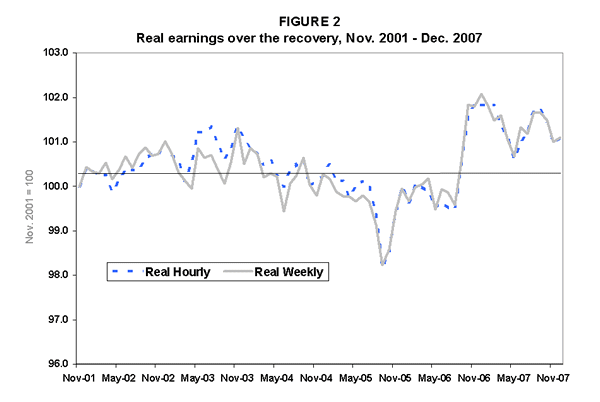Issue Brief #240
With the release of today’s consumer price index for December—up 0.3% for the month and 4.1% for 2007—we can now examine how real hourly and weekly earnings did over the course of last year (comparing this December to last December).
As shown in Figure 1, both hourly and weekly earnings fell in 2007, a sharp reversal from the gains in 2006. After growing by about 2% in 2006, both hourly and weekly earnings fell, after adjusting for inflation, by about 1% last year.

How have real hourly and weekly earnings fared over the recovery that began in November 2001? The gains have been marginal: both are up only 1%, as shown in Figure 2. Real earnings were largely stagnant through mid-2006, until rising sharply for a few months due to very low inflation.
Most recently, the slowing economy has led to diminished nominal wage growth, while inflation, due to higher energy costs, has accelerated. This combination—slower growing nominal wages and faster growing prices—has eroded the value of most workers paychecks.
It is unlikely that either of these trends will reverse in coming months, meaning the buying power of most working families will be diminished. This, in turn, will continue the downward pressure on consumption and increase the likelihood of recession.

Note: Earnings are for production, non-supervisory workers ,i.e., the 80% of the workforce in blue-collar or non-managerial jobs. The BLS deflates these wage values using the CPI-W deflator.
